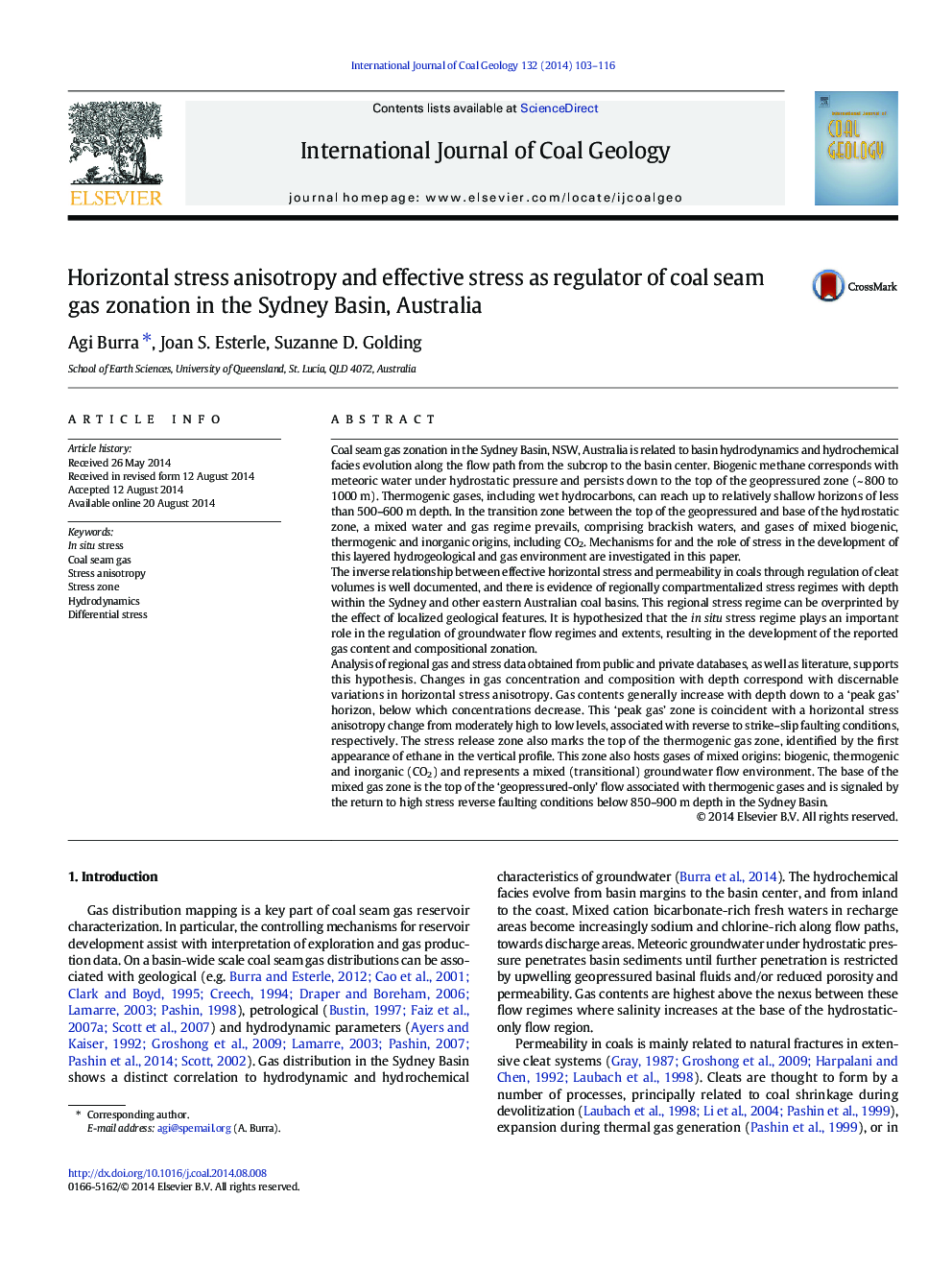| کد مقاله | کد نشریه | سال انتشار | مقاله انگلیسی | نسخه تمام متن |
|---|---|---|---|---|
| 1753213 | 1522565 | 2014 | 14 صفحه PDF | دانلود رایگان |

• Gas characteristics in Sydney Basin are zoned and cross cut bedding and structure.
• In situ stress varies zonally with depth and controls groundwater movement.
• Mixing of fresh and saline fluids occurs where pore pressure exceeds effective vertical stress.
• Gas and stress zones coincide and stress regime is the principal driver of gas distribution.
Coal seam gas zonation in the Sydney Basin, NSW, Australia is related to basin hydrodynamics and hydrochemical facies evolution along the flow path from the subcrop to the basin center. Biogenic methane corresponds with meteoric water under hydrostatic pressure and persists down to the top of the geopressured zone (~ 800 to 1000 m). Thermogenic gases, including wet hydrocarbons, can reach up to relatively shallow horizons of less than 500–600 m depth. In the transition zone between the top of the geopressured and base of the hydrostatic zone, a mixed water and gas regime prevails, comprising brackish waters, and gases of mixed biogenic, thermogenic and inorganic origins, including CO2. Mechanisms for and the role of stress in the development of this layered hydrogeological and gas environment are investigated in this paper.The inverse relationship between effective horizontal stress and permeability in coals through regulation of cleat volumes is well documented, and there is evidence of regionally compartmentalized stress regimes with depth within the Sydney and other eastern Australian coal basins. This regional stress regime can be overprinted by the effect of localized geological features. It is hypothesized that the in situ stress regime plays an important role in the regulation of groundwater flow regimes and extents, resulting in the development of the reported gas content and compositional zonation.Analysis of regional gas and stress data obtained from public and private databases, as well as literature, supports this hypothesis. Changes in gas concentration and composition with depth correspond with discernable variations in horizontal stress anisotropy. Gas contents generally increase with depth down to a ‘peak gas’ horizon, below which concentrations decrease. This ‘peak gas’ zone is coincident with a horizontal stress anisotropy change from moderately high to low levels, associated with reverse to strike–slip faulting conditions, respectively. The stress release zone also marks the top of the thermogenic gas zone, identified by the first appearance of ethane in the vertical profile. This zone also hosts gases of mixed origins: biogenic, thermogenic and inorganic (CO2) and represents a mixed (transitional) groundwater flow environment. The base of the mixed gas zone is the top of the ‘geopressured-only’ flow associated with thermogenic gases and is signaled by the return to high stress reverse faulting conditions below 850–900 m depth in the Sydney Basin.
Journal: International Journal of Coal Geology - Volume 132, 1 October 2014, Pages 103–116